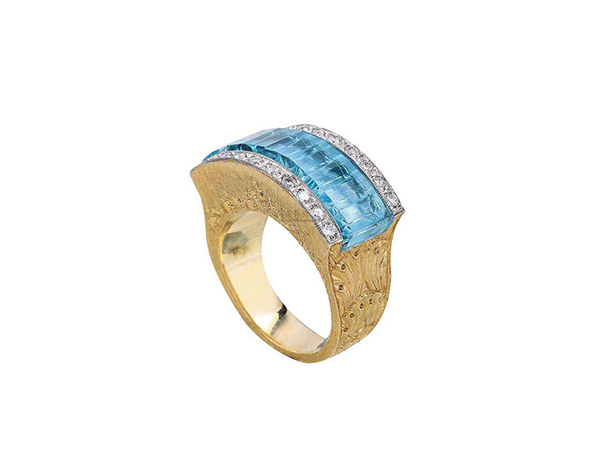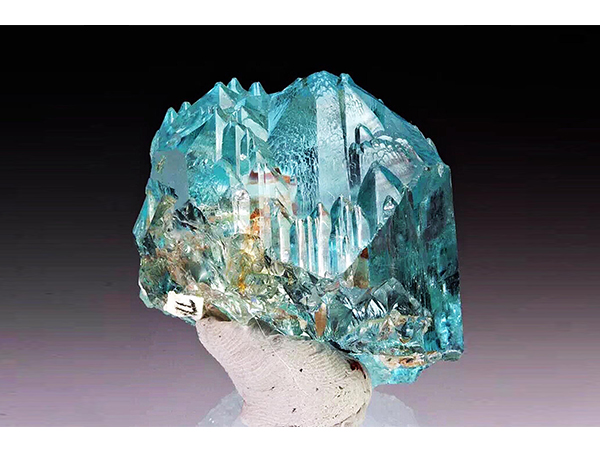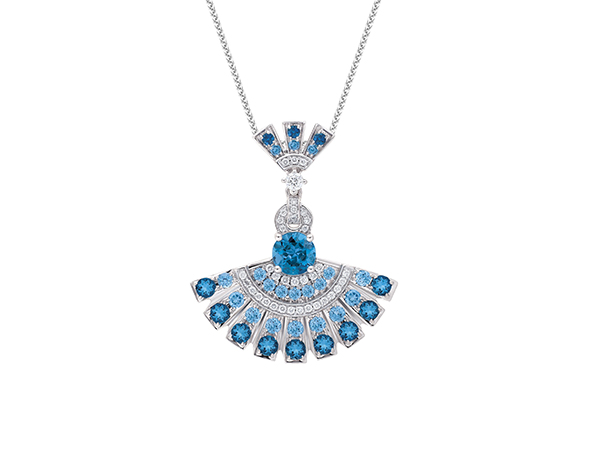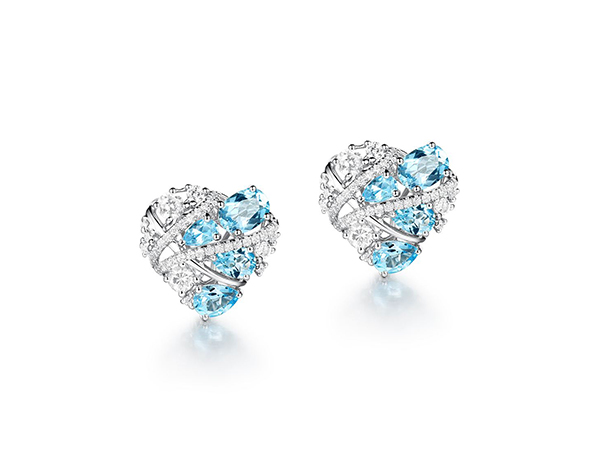NOVEMBER BIRTHSTONE-TOPAZ STONE

Topaz,alsoknownas topaz or citrine in mineralogy, fluorine-containing aluminosilicate mineral, known as Topaz in English. Since consumers are easily confused with the names of topaz and yellow jade, the English transliteration name "topa" is used commercially to label gem-quality topaz. Because the topaz is very transparent and hard, the reflective effect is very good, and the color is beautiful, which is quite popular. For example, in the seventeenth century, the Braganza diamond (1640 carats) in the Portuguese crown was once considered the largest diamond, and it has been confirmed to be a colorless topaz.
Topaz is mainly distributed in Brazil, Mexico, Saxony, Scotland, Japan, and Ula Mountains. Topaz is purely transparent, but is often opaque due to impurities. Typical topaz is wine or light yellow. But there may be white, gray, blue, and green. The colorless topaz is probably cut as a diamond. Colored topaz may be less stable or faded by sunlight. Among them, the finest dark yellow is the most precious, the yellower the better. Followed by blue, green and red.
Topaz can be worn as a talisman, which can ward off evil and make people overcome sorrow and enhance confidence. With topaz powder soaked in alcohol, you can treat asthma, insomnia, burns and bleeding. Many countries in the world have set topaz as "the birthstone of November" and are known as the "stone of friendship".
Origin of the name
The English name of Topa is Topaz. There are two kinds of names for the name: one is proposed by the ancient Roman scholar Pliny. He thinks it is the Greek word "Topazios" (this is an island name, rich in olivine, The appearance of olivine and topaz is very similar. It is not easy to find a gemstone, so the word is also "difficult to find". It originally refers to a small olivine in the Red Sea called "Topaz". The locals mistakenly called it a yellow gem. Another argument is that it is derived from the Sanskrit word "Topas," meaning "fire." In 1737, a man named Henkel named after Topaz, a German-born yellow gem.

Topaz is generally produced in granitic pegmatite, gas-forming hydrothermal, skarn and alluvial deposits. More than 95% of the world's topaz is produced in the Minas Gerais pegmatite in Brazil near Rodriguez Silva. The variety is colorless and various colored topaz, which has produced weight. The 300-kilogram transparent topaz is the best in the world and is now in the Museum of Natural History in New York.
In addition, Sri Lanka, the United States, Myanmar, the Ural Mountains, Australia and other countries also have gem-quality topaz output. China's topaz production is produced in Inner Mongolia, Jiangxi, and Xinjiang. The topaz in Inner Mongolia is produced in the muscovite and the two mica-type granitic pegmatites, and is symbiotic with minerals such as beryl and monazite. The topaz of Jiangxi is a high-temperature hydrothermal fluid, which is rich in the fine veins of the veins, and is symbiotic with quartz, muscovite, feldspar, wolframite and beryl.
Types of
Topaz is usually divided into the following varieties by color:
Shirley
The most important variety of topaz is named after the color of sherry, the light yellow or dark brown wine of Spain. It includes natural and processed different shades of topaz with yellow and brown main tones, and even orange and orange with brown components. The most expensive of these is the orange-yellow topaz, which is called the stone of the emperor. It is also in the category of light orange and golden yellow. (It should be noted that it is desirable to use the more attractive name or cause of the gem to increase its value. Therefore, many merchants refer to almost any yellow, yellow-orange topaz as the emperor topaz. The rare "velvet" tones of soft brownish yellow to tan and orange and orange red topaz are also considered. The best quality sherry topaz in the world is produced in Brazil.

It includes blue varieties with deep and light tones. Commercially, the blue topaz is divided into "sky blue" (bright blue), "London blue" (bright blue) and "Swiss blue" (light blue). The color-changing topaz was still identified as a natural gemstone in jewelry appraisal because it did not add any other substances during the treatment. The natural blue topaz shades vary from place to place.
Pink
Refers to the powder, light red to light purple or violet topaz. It is mainly made of yellow and brown topaz by irradiation and heat treatment. The darker natural pink topaz is the most popular, but in very small quantities, it is also treated with a colorless topaz, but with a brownish tint. The stable red component is always associated with chromium and has its characteristic absorption line.
colorless
Used in the past as a diamond substitute, it was once called "slave diamond." Most of the current color stone materials are rarely used as a piece.

The highest value topaz is red and Sydney, followed by brown. The yellow topaz is similar in appearance to the cheap yellow crystal and is easily confused. Therefore the price is not high. Colorless topaz has the lowest value.
In addition, the topaz on the market today is divided into natural topaz and optimized color-changing topaz. It is rare in the large-scale topaz market without natural color change, and the optimized color-changing topaz is optimized in the process. No other substances were added, so it was still recognized as a natural gemstone in the identification of jewelry. As far as color is concerned, the most common in the market is the blue and pink topaz. However, some of them are made of colorless or brown topaz, which has been optimized by radiation and high temperature.
The bright pink and blue topaz of natural colors are rare in China, and the international price is also very high. The price of irradiated topaz is slightly lower, blue is lower than aquamarine, but the price of topaz is still generally higher than crystal.
Both natural and modified topaz are based on color, clarity and weight. With deep color, good transparency, large block and no cracks. When purchasing topaz, the color is required to be rich, pure, uniform, transparent, and less, and the weight is at least 0.7 carats. Topaz has brittleness and cleavage, is afraid of tapping and beating, and is easy to crack in the direction of cleavage. Because the topaz develops a cleavage parallel to the bottom surface, it is necessary to prevent the cut surface from being parallel to the cleavage surface.
Otherwise, it is difficult to polish and polish, and care should be taken when setting, so as not to induce cleavage and destroy the shape of the gemstone.
The evaluation of topaz is considered in terms of color, transparency and clarity. The color is better than the light color, the transparency is better than the translucent, and the naked eye is the foundation. The best colors recognized are pink topaz and sherry, the former is rare and more sacred, followed by pink and sherry, followed by blue and yellow.

The yellow topaz is generally the same as the citrine, so that the citrine is also squeezed into the topaz. Colorless topaz has the lowest value.

distinguish
In many cases, crystal, aquamarine, tourmaline, and glass imitations are easily confused with topaz, especially yellow crystal. These gems are difficult to distinguish under the naked eye, so pay special attention when selecting. Topaz has vertical stripes and crystals have horizontal stripes. Moreover, the weight of the topaz is larger than that of the yellow crystal. When the topaz is purchased, it can be rubbed by hand.
The best method of identification is to sink the topaz in the heavy liquid of diiodomethane (relative density 3.32). It will float; secondly, the gloss of the topaz is very harmonious, and the luster of the citrine is sharper; finally, the tourmaline has a strong dichroism, which can be distinguished.

value
In addition to the decorative value, since the main color yellow of topaz symbolizes peace and friendship in Western culture, the yellow topaz is used as the birthstone of November to express the desire for long-term friendship. Topaz is also known as the "stone of friendship", representing sincere and persistent love, meaning beautiful and intelligent. Symbolizes richness, is alive, can eliminate fatigue, can control emotions, and helps to rebuild.
